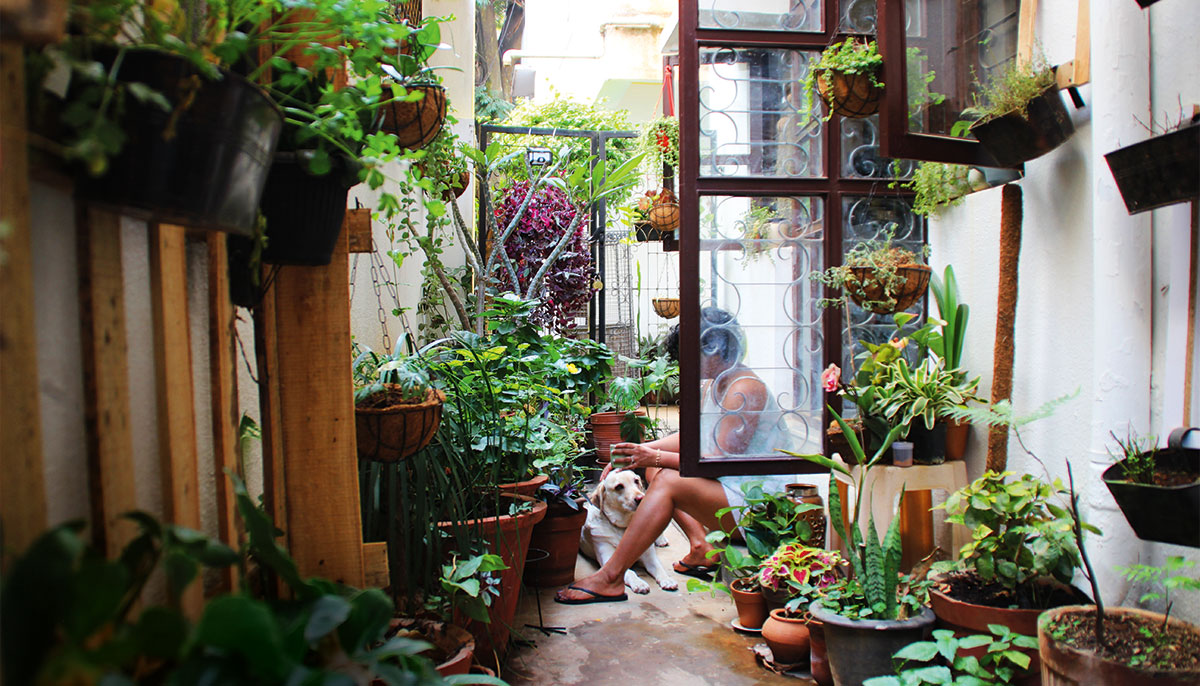What higher place to follow mindfulness than within the backyard? Within the backyard, we are able to let go of what others consider us, let go of attempting to please different folks, let go of judging our each motion. Our flowers don’t choose us. We are able to settle into our genuine selves. We’re house—our hearts are house.
Training mindfulness, we don’t want to enhance our backyard in any approach. We’re abnormal gardeners with abnormal gardens, and we’re doing the perfect we are able to, given our assets of time, cash, and different commitments. Let’s embrace the abnormal magnificence in our yard. Let’s tune into that happiness. Mindfulness is a forget-me-not reminding us to be right here now.
The backyard is a wonderful sanctuary through which to get up from the delusion all of us stay in.
The 4 foundations of mindfulness stake out the corners of our meditation backyard. These practices of physique, emotions, thoughts, and dhammas result in the awakening of our heart-mind to the wonder throughout us, even in troublesome instances.
Whereas pruning bushes or raking leaves or planting seeds, settle into the physique. That is first basis of mindfulness. Maybe we’re conversant in mindfulness of the physique from practising breath meditation, strolling meditation, or physique scans. However within the backyard, once we are in movement and doing a lot of duties, it’s simple to lose observe of what the physique is doing. Strive merely being conscious of every posture. By saying the labels aloud, you remind your self of what you’re doing: strolling from the flower mattress to the compost pile; standing while you’re watering a flowerbed; or bending over while you’re weeding.
As you deadhead your flowers, you’ll be able to follow the 5 each day reflections of growing old, sickness, demise, impermanence, and karma. Say to your self, “This flower is of the character to develop outdated and die.” Discover the physique strolling to the compost bin. Pause for a second and ponder the life cycle of compost. Right here right this moment, gone tomorrow. Subsequent yr, new life springs forth. It’s a thriller.
Subsequent, we transfer on to the second basis of mindfulness, emotions, by which is supposed temper or hedonic tone—not feelings. Go stand in one among your flowerbeds. How do you are feeling? Nice? Disagreeable? Or impartial? No must go wandering off into story proper now. Simply, how do you are feeling? Settle for the primary phrase that involves thoughts. No want to evaluate the reply. We’re scientists amassing information on this second. There are not any mistaken solutions.
Maybe physique and emotions, the primary two foundations of mindfulness, are adequate practices for you. Any one of many 4 foundations results in awakening; you want select just one. However analytic varieties are likely to benefit from the third basis: the thoughts. Watching the shenanigans of that rascal is a slippery object of meditation.
We start our evaluation of the thoughts by noticing the three roots of stress—greed, aversion, and delusion. In the event you like typologies, it is a very helpful one. The so-called grasping kind of particular person needs extra of the nice; the so-called aversive kind needs much less of the disagreeable; and the deluded kind (which is all of us) is confused by this concept.
Stroll round your backyard and once more label the whole lot your eyes land on as nice, disagreeable, or impartial. However this time, discover which class will get probably the most hits. Maintain the judging thoughts at bay. You merely wish to see in the event you’re tending towards greed, aversion, or delusion, as a result of in that approach you’ll know which antidote to use. That’s, you’ll know which follow will particularly profit your thoughts, making it extra versatile.
Apply generosity for the grasping kind, loving-kindness for the aversive kind, and knowledge for the delusional kind. Generosity would possibly imply freely giving bouquets of your flowers or giving your time to assist a pal in her backyard. Loving-kindness is one thing we are able to follow in each step, watering our minds with loving-kindness and goodwill. Knowledge comes from studying dharma books or articles and by surrounding ourselves with religious buddies who hold us on the trail, particularly when our unkind habits of thoughts wish to take us into the ditch. With these practices, we let go of the well-worn habits of thoughts.
One other useful use for the grasping, aversive, and delusional typology is that these varieties lead us towards the popularity that the 5 hindrances forestall our minds from flowering with mindfulness and goodwill. The 5 hindrances are sense want, ill-will, laziness, restlessness, and doubt. Sense want needs extra and higher—extra and higher flowers, gardens, greens. In poor health-will notices what’s mistaken with the backyard and is fast to evaluate the gardener. Laziness intends to backyard or meditate however doesn’t get round to it. Restlessness contains anxiousness, fear, and distraction. Doubt doesn’t belief the thoughts, the backyard, or the gardener, so we doubt that we’re gardening correctly.
Lastly, we follow the fourth basis of mindfulness, the attention of dhammas, or phenomena—that’s, the whole lot, all of nature. After we’re outside in nature, attending to our crops, dhamma is there. Sitting within the calm of the backyard, can we let the timber educate us about accepting life simply as it’s on this very second? Can we take mindfulness with us wherever we go and convey curiosity to the investigation of nature throughout us?
The backyard is a wonderful sanctuary through which to get up from the delusion all of us stay in. We domesticate the situations for awakening just by getting into the yard and no matter backyard we might have there. Discovering the vitality to backyard or to meditate, we consider the duty at hand, even when we’re simply sitting on a backyard bench. We immerse ourselves within the pleasure the backyard brings us. Aware of physique, emotions, thoughts, and nature, we stroll step-by-step towards the joyful, calm, and type thoughts that feels at house within the backyard and on the earth.



